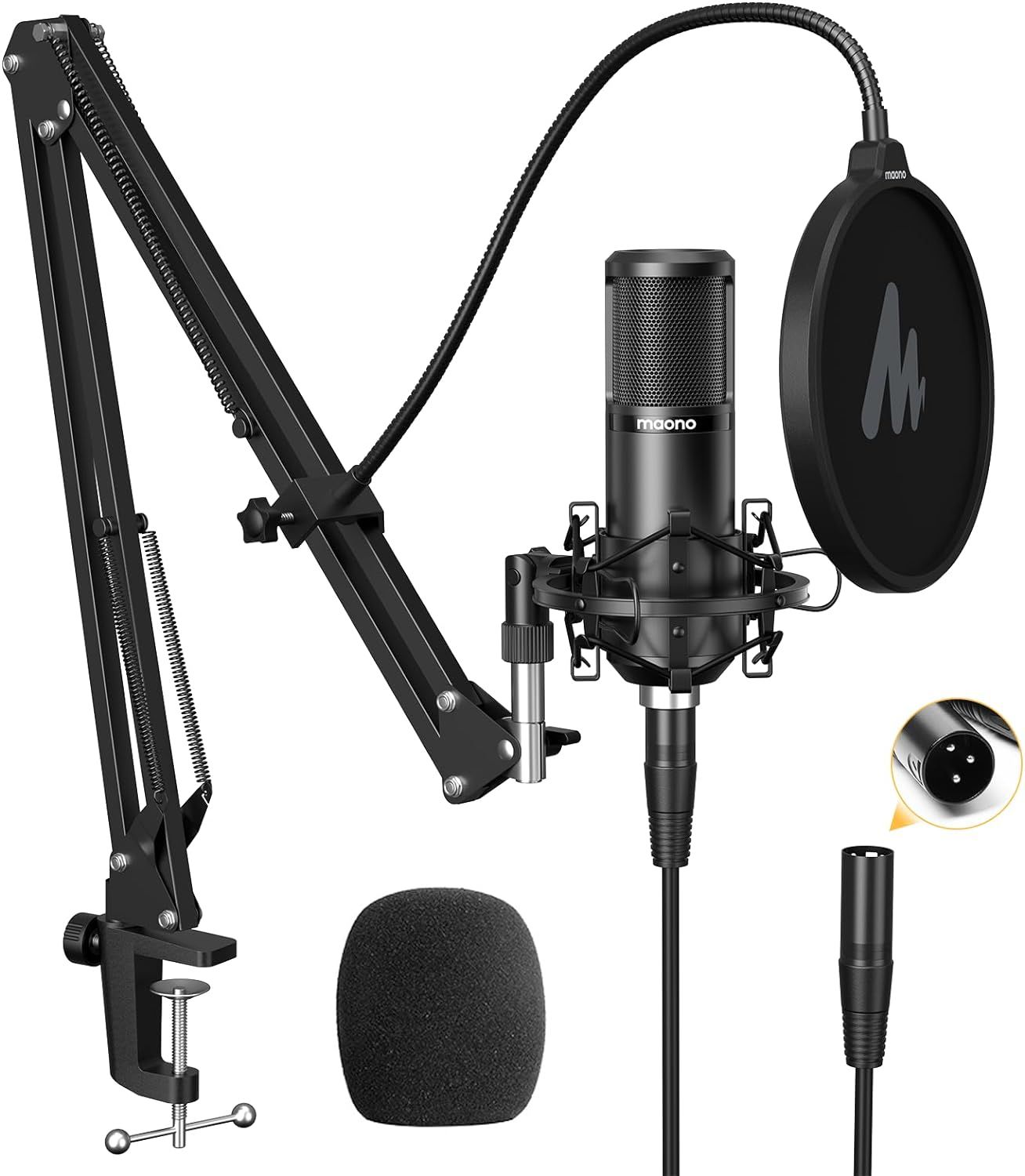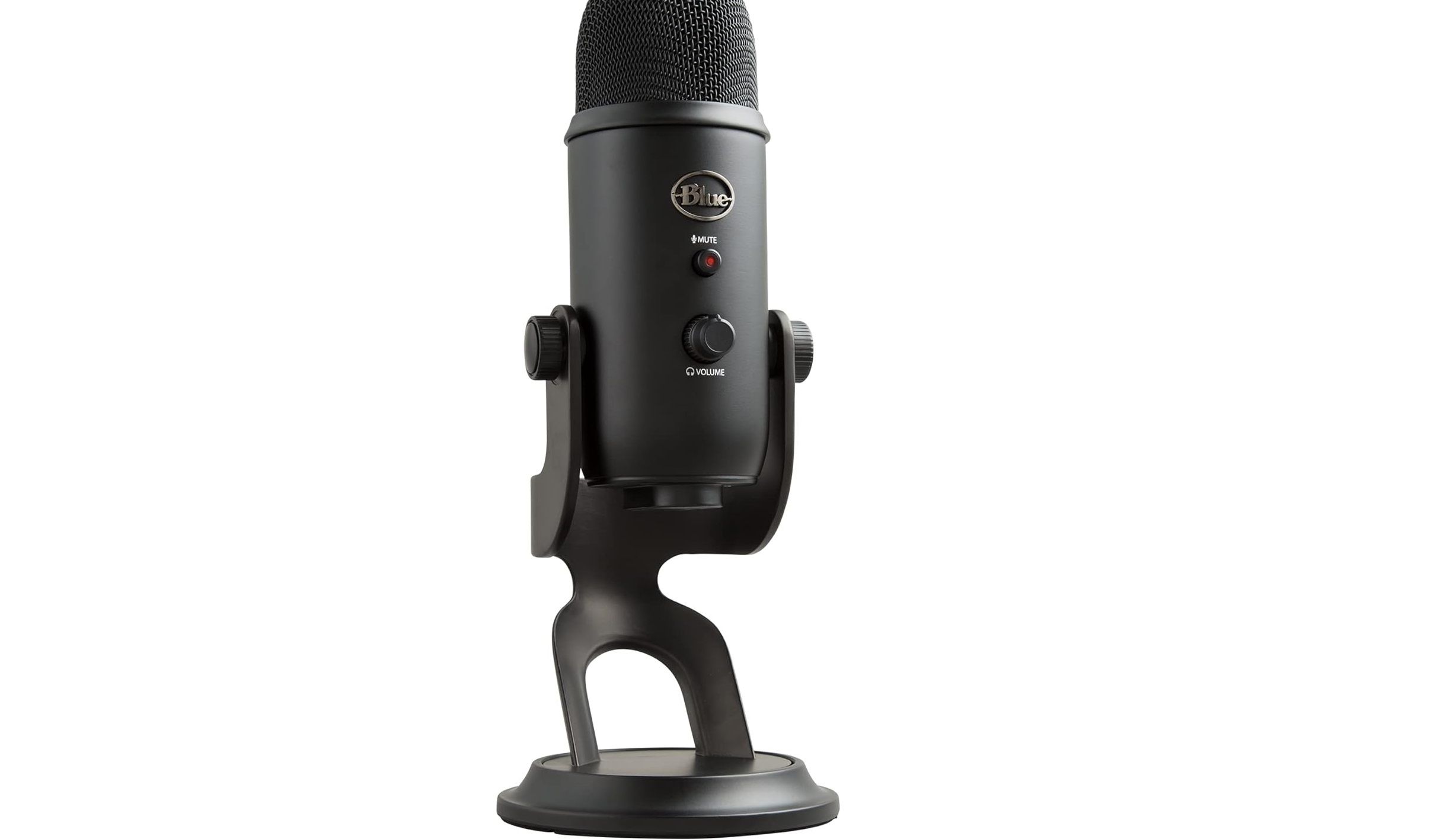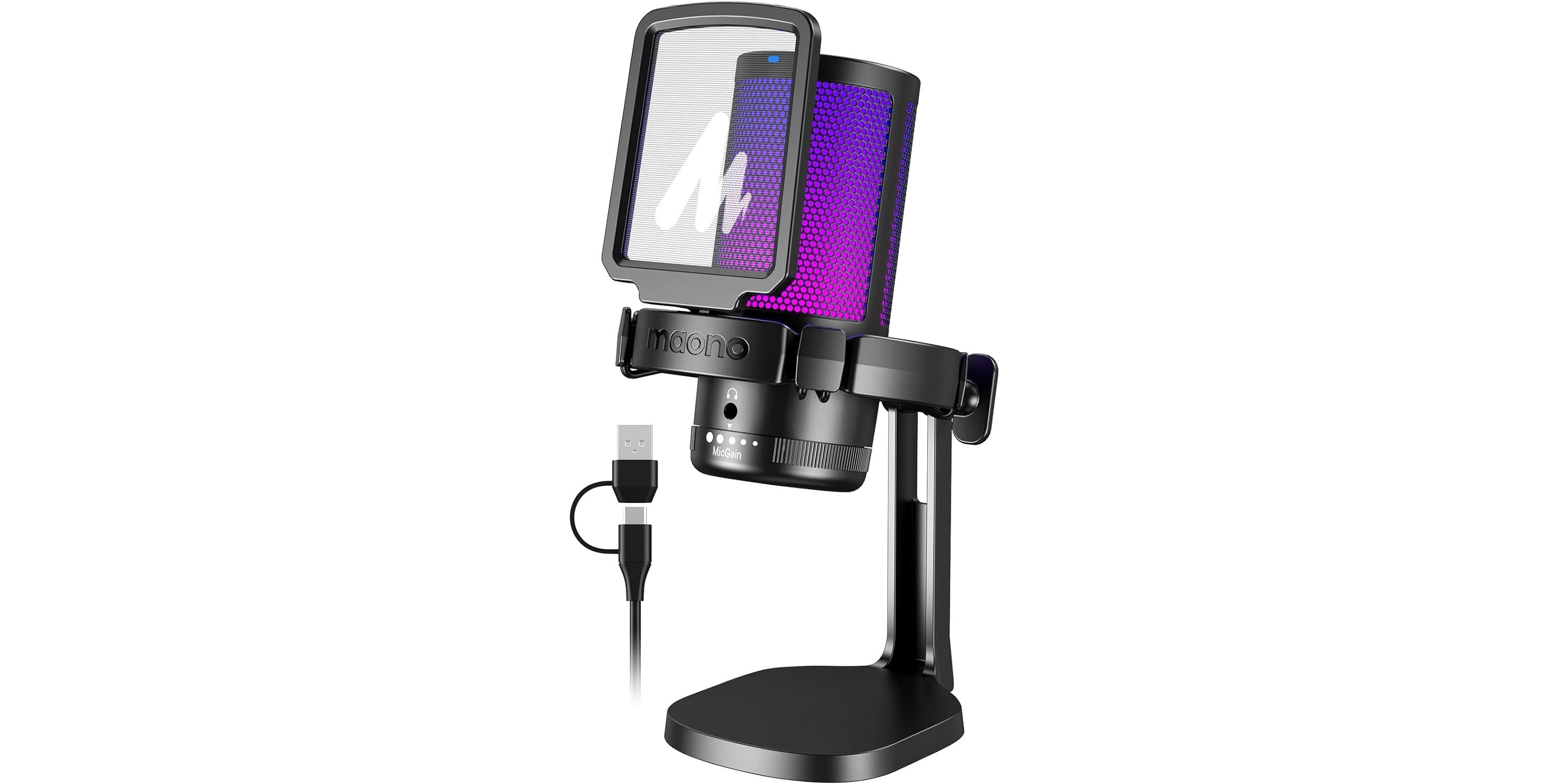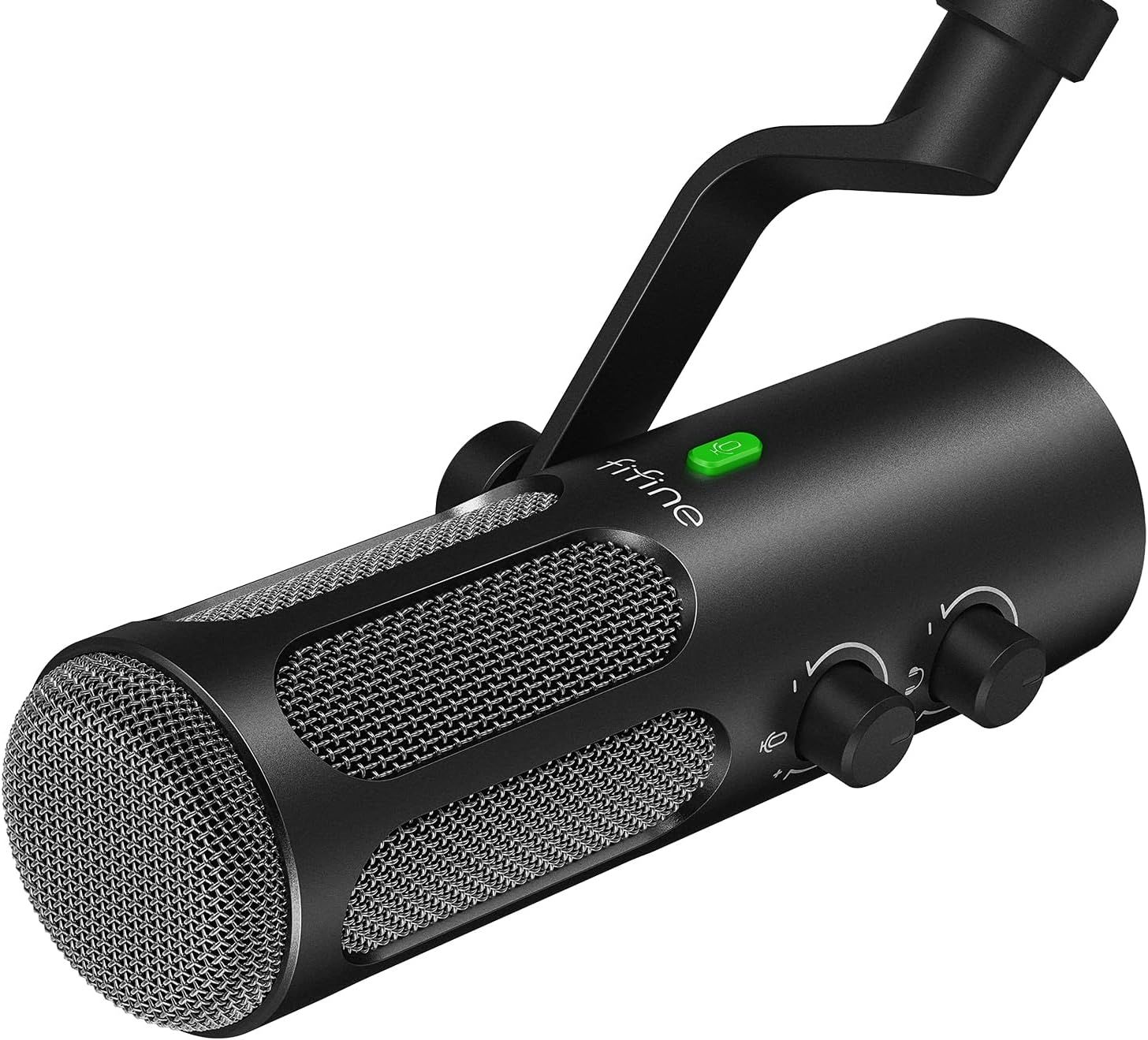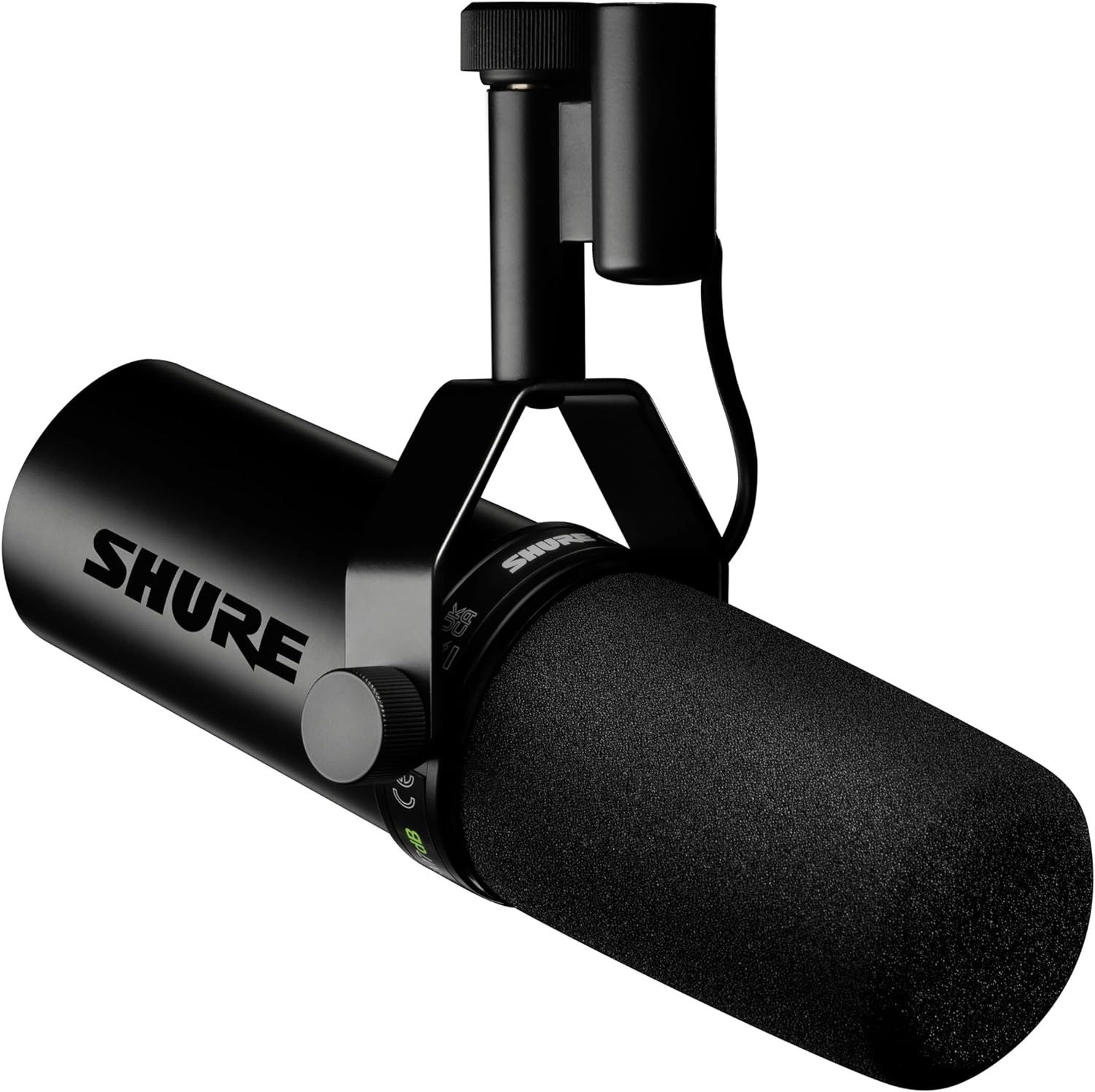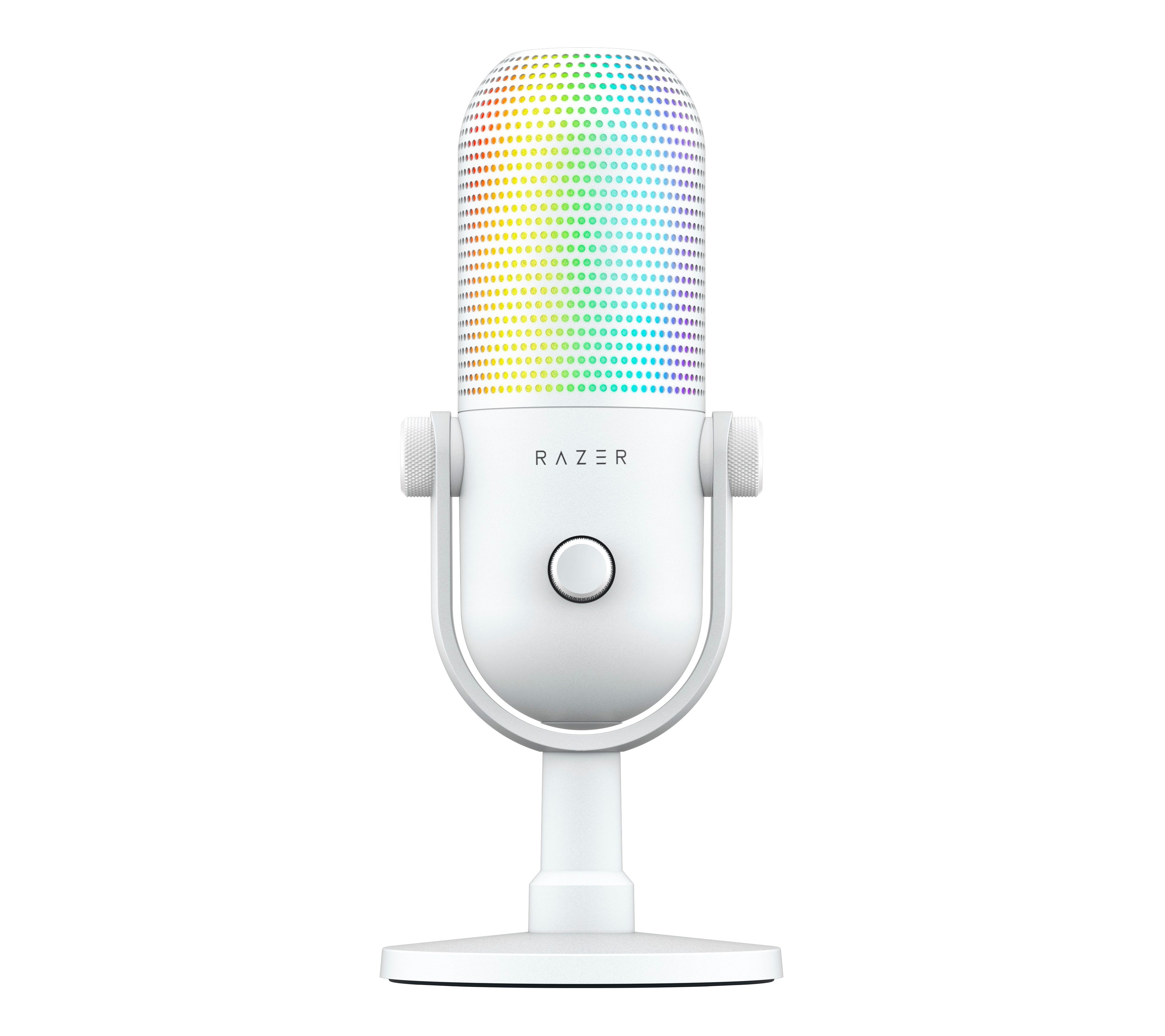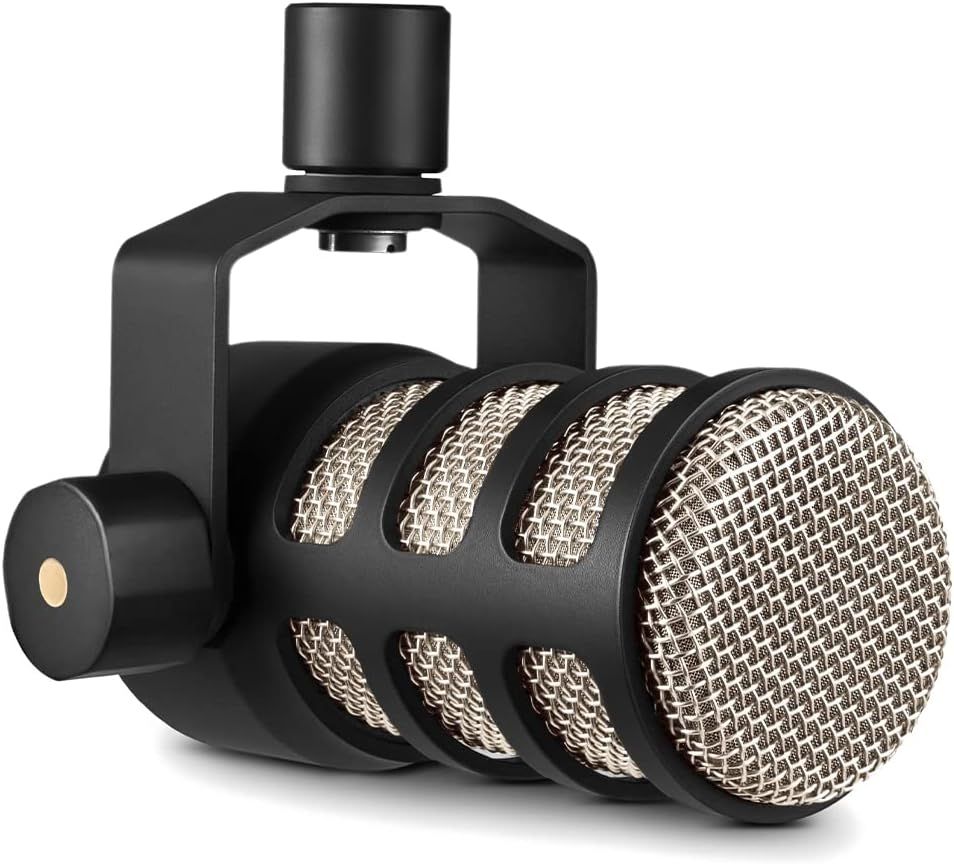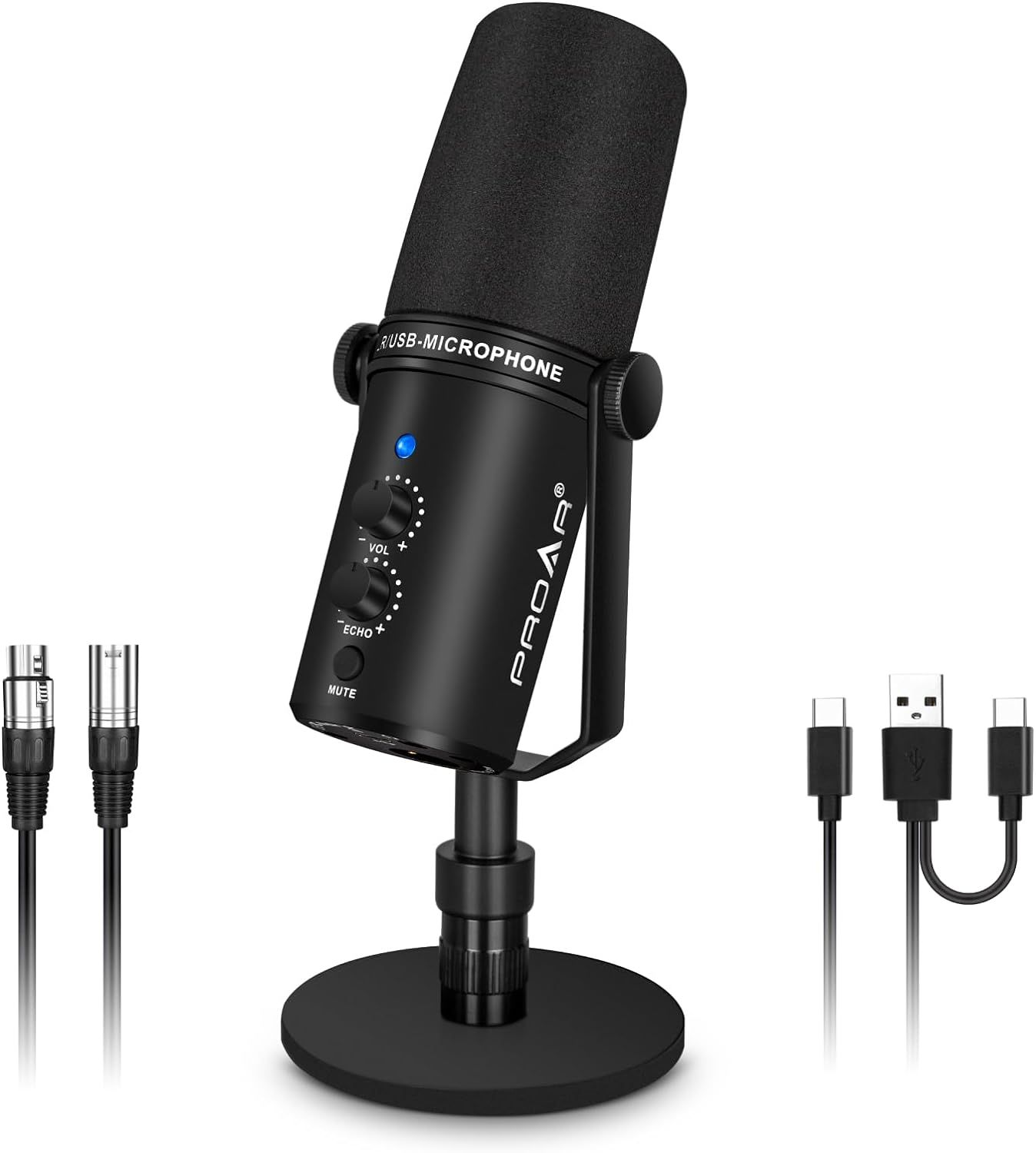Whether you’re a gamer, streamer, or a sound producer, finding a microphone that excels at recording vocals can be a bit of a challenge. Unlike standalone gaming microphones, mics designed specifically for voice recording tend to be a major investment, if not monetarily, than by their complexity.

The Best Streaming Gear For Gamers in 2024
Whether it's time to start a new streaming channel or upgrade an existing one, these tools are essential for gaming streamers to succeed!
For instance, most voice recording mics hang from adjustable arms clamped to a desk and almost never forgo a good pop filter. While your environment plays a huge role in the quality of your recording, choosing a reliable microphone with useful features is an essential step to any endeavor that involves voice recording, regardless of whether it’s a podcast, audition, or live stream.
Updated June 15, 2024 by Megan Miranda Reyes:This guide has most recently been updated with more information about how to choose a great recording mic, as well as a handful of new mic choices that will give users more options as far as budget, connectivity, and overall quality.
Game ZXC's Picks for the Best Microphones for Recording Vocals for 2024
The MAONO XLR Condenser is one of the best microphones for recording vocals for 2024. It features a large 16 mm condenser capsule and a low-mass diaphragm for superior transient response and extended frequency response. Consequently, the microphone records vocals in a more realistic soundscape. The microphone comes with a bevy of extras, including a pop filter, adjustable metal arm, and a windscreen cap.
Thanks to its wide dynamic range and high-SPL handling, it is the most versatile microphone for vocals. Users can benefit from it for online chatting, vocals, streaming, recording, and podcasting. The microphone connects via a 98-inch professional-grade male-to-female XLR cable. Users must connect it to a 48V phantom audio/power interface for an excellent audio experience. It also features cardioid pointing that greatly reduces ambient noise, ensuring a more immersive vocal recording experience.
One of the things that the MAONO team did when making this microphone was to use high-standard craftsmanship and high-quality materials. Consequently, the durable outer casing protects the internal structure, making it last as long as possible. Despite the dependability of the MAONO XLR Condenser, the mic comes with a very affordable price tag, and is often on sale for even less, at around $60.
USB mics are meant to be easy to use while still delivering impressive audio quality. Logitech, known for their durability and accessibility, is a natural choice for anyone looking to grab the very best USB microphone.
The Logitech Blue Yeti USB mic is the result of a lucrative partnership between two powerhouses of quality, and while it isn't the absolute best choice overall, it has a lot of enticing features and comes at the reasonable price of just $100.
The mic uses three separate capsules in order to offer users four pickup patterns, expanding its versatility and making it easy for podcast groups and users in busy households to record with clarity. Further, this creator-focused Blue Yeti mic has no latency when it comes to headphone monitoring, so you can be sure your recording is going to come out clean well before editing begins.
There are a handful of colors to choose from and the metal construction promises a long lifespan, making the Logitech for Creators Blue Yeti mic the best USB option for most users.

The Best Budget Gaming Headsets in 2024
Finding a good cheap gaming headset is a tricky affair, so take the legwork out of your search with these amazing options.
Not all users can afford to get studio-quality recording devices, but that doesn't mean they don't want or need a device that can capture their voice accurately. Enter the MAONO DGM20 USB microphone, which is available for a measley $35 or less, during sales. This vibrant RGB mic comes with a pop filter and convenient touch controls, though the internal specs may be of more interest to some.
This MAONO mic surprisingly comes with noise-cancellation, which can be quickly activated using the accompanying app. Like the Razer Seiren V3, this mic would do best close to your mouth, but with the wide base it comes with, that's easy enough to achieve.
The cardioid mic has a fairly wide range, making it ideal for both individual streaming and small podcast groups. Available in a number of colors and able to be setup in no time flat, the MAONO DGM20 USB microphone is an excellent entry into voice recording on a budget.
FIFINE has been received by the market with glowing reviews, and their dual-functionality recording microphone is another addition to their impressive lineup. The Tank 3 microphone may look simple, but the tech inside gives it the power to capture voices with crystal clear quality, regardless of whether they'd prefer to record using a USB connection or an XLR connection. The dynamic microphone comes complete with noise-reduction and shock-absorption, effectively reducing unwanted sounds from getting picked up while recording.
The mic has a signal-to-noise ratio (SNR) of less than 80DB and an SPL of up to 120DB. Additionally, the frequency range is quite wide, offering excellent recording between 50Hz-16KHz. The USB-C plug is a bit shallow, but in general these features can be enjoyed across both connection methods.
The FIFINE team has also included a button that users must press to mute the mouse, which may be inconvenient for some, but can be helpful to others. Next to the mute button are volume controls too, making it easy to pause or adjust your recording sessions. The convenient bundle comes with a boom mic arm and is ideal for users who are ready to move on from entry-level recording devices, but still want to be mindful of their budget.
If money is no object and you're looking to get real studio-quality recordings, then the Shure SM7dB dynamic vocal microphone is the best way to go. Although the mic can come bundled with a boom mic arm for a significant upcharge, it is best suited to users who already have some of their audio equipment setup and are looking to upgrade to a professional level device.
Shure's M7dB is designed to give you full control over your audio recordings, with a built-in preamp and a wide frequency response working to support all kinds of adjustments. For instance, the gain level can be set to +18dB or +28dB, with a bypass function also available to forgo the preamp altogether.
The mic itself uses an impressive cardioid polar pattern that includes rea-rejection and effectively isolates your voice from background noises even in spaces where keyboards or PC cooling fans may make more noise than you'd like.
The on-board controls are just the surface level features that make the M7dB easy to use. The mic is also compatible with basically every XLR audio interface available. While most users are not going to want such a high-end device, those who are ready to take their audio projects to a professional level will do very well with the Shure M7dB dynamic XLR microphone.
Razer has long been known to be the king of RGB gaming accessories, with their Synapse and Chroma apps tying together all of their peripherals to offer users stunning displays. The Seiren V3 USB mic is more than just a pretty face though, and actually captures excellent audio ideal for streamers and podcasters.
Although it is easily fitted to metal arms, the mic comes with a small stand by default and can be tilted vertically to hone in on your voice from anywhere on your desk. It should be kept somewhat close to your face, but with a digital gain limiter and built-in shock absorber, you won't have to worry about noise from mechanical keyboards or wireless mouse lift-offs getting mixed in with your voice, despite the mic not including specific noise-cancellation technology.
The plug-and-play mic features touch controls on the top to mute, but there are tons of audio customization options available on the Razer Synapse app too. Additionally, the RGB lighting can be synced with your game and other Razer devices through the Chroma app.
Available in black, white, and pink, the Razer Seiren V3 is the best RGB mic for recording voices and makes for a great addition to any vibrant gaming stream setup.
Podcasts are showing no signs of slowing down their rise in popularity, but that doesn't mean you have to spend a ton of money to be able to compete. The Rode PodMic is one of the most popular options for podcasters and it's available for just $100 right now, though you can spend more to get accessories such as a boom mic arm.
The Rode PodMic is compatible with most XLR devices, meaning you'll get studio-quality audio without much extra effort. Supporting the clear audio capture is an integrated pop filter that effectively reduces plosives, and an internal shockmount, which helps mitigate noise from things like cups being put down, keyboards clacking, and other physical contact on or near the mic.
Although it's USB functionality is a bit lacking, overall, the Rode PodMic is the best option for streamers and pocasters who want to share their voice with the world.
This product from PROAR greatly boosts the signal gain for a smoother frequency band, a more detailed sound, and a wider pickup range, delivering an extremely clear voice recording all the time. But its accolades do not stop there. Thanks to its 95bB SNR, the microphone works hard to eliminate in-signal noise, while a removable foam mic cover physically filters out the noise to reduce noise from ambient airflow for a more transparent sound.
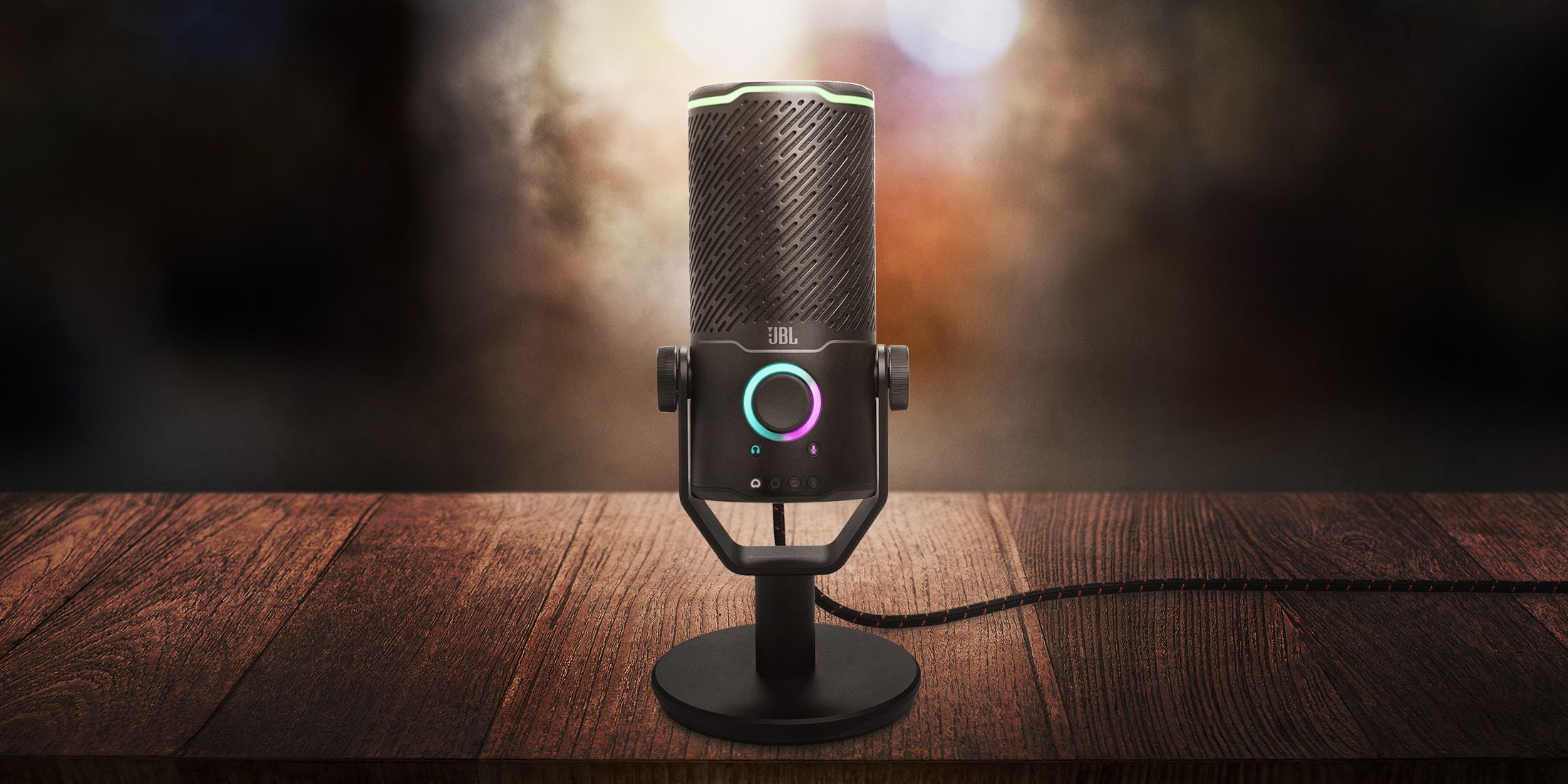
JBL Quantum Stream Studio Microphone Review
The JBL Quantum Stream Studio microphone is a fantastic option for PC gamers, streamers, or content creators in the market for a new microphone.
When crafting this mic, the PROAR team ensured it had USB-C and XLR connections. With the USB-C option, the mic delivers digital-quality sound on desktop computers, laptops, tablets, smartphones, or PS4/PS5. The XLR output ensures crystal-clear sound recording.
Much thought went into designing and constructing this mic to make it sturdy and unbreakable while providing users with greater control. Thanks to the all-metal construction, the mic is extremely durable and looks beautiful, thanks to the outstanding high-end appearance. Also, users can use the mute button and gain control to adjust the sound quality.
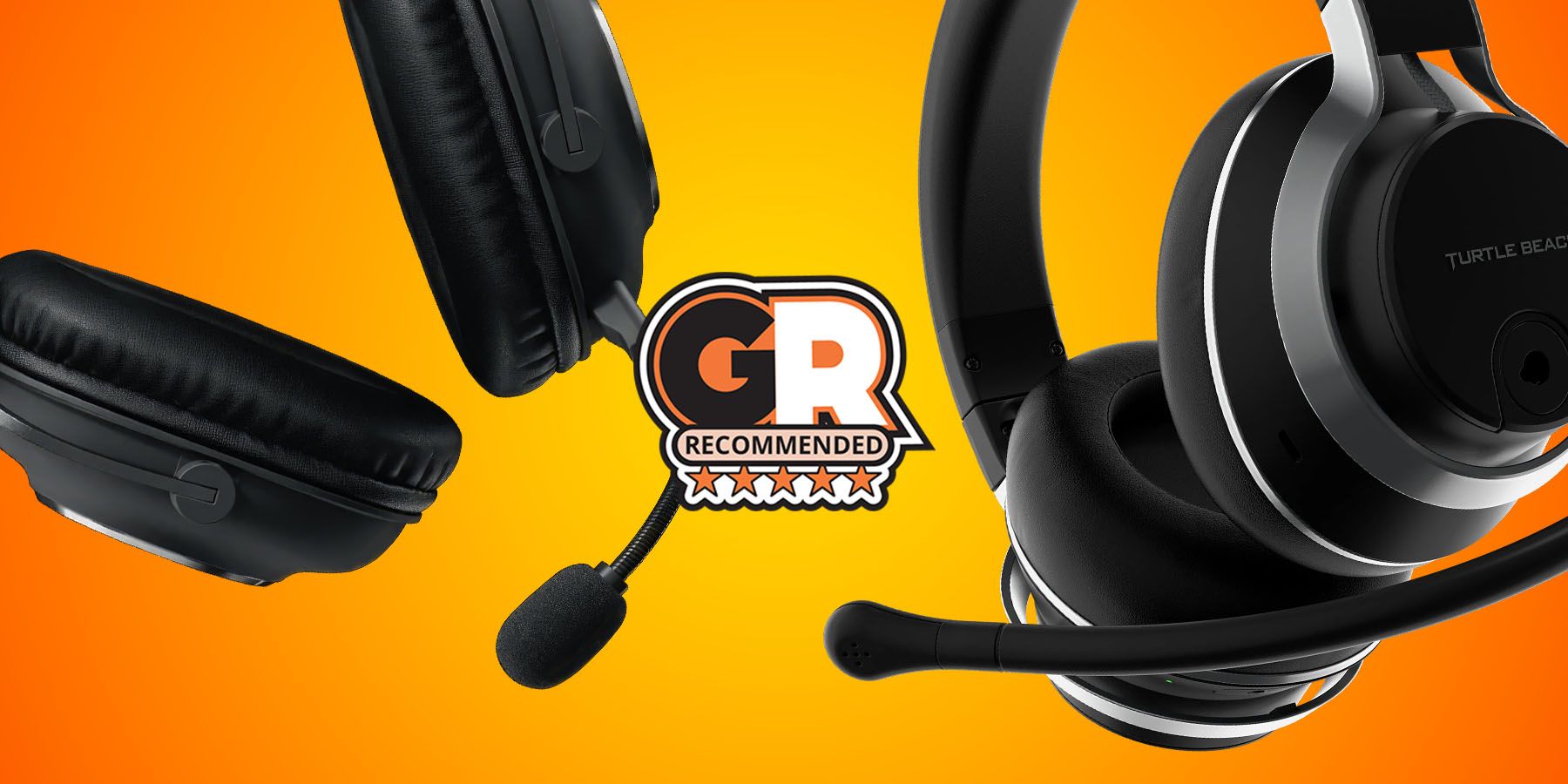
How to Choose the Best Gaming Headset with Mic For PC in 2024
An easy to follow step by step guide on how to choose the best gaming headset with mic for PC.
How To Choose the Best Microphone for Recording Vocals
Not all microphones for recording sound are created equal. Some have a sturdy build quality but cannot produce high-quality sound. Others are sensitive and can capture sound accurately but have a lot of noise. Here are the factors to consider when selecting a microphone for sound recording:
The best mic for recording vocals will depend on the user's recording environment, intended use, and distinct voice. So, try out different mics to determine which one complements their vocals.
Sound Clarity
When a user listens to the final recording, it should have the inherent voice contour identifiers. Whether in high or low tones, the voice should never sound muffled. Also, the sound should be transparent enough and neutral. The most critical determinant of sound clarity is the frequency range. The higher the frequency range, the clearer the resultant recorded sound.
Connectivity Options
Microphones connect to devices via 3.5mm auxiliary, USB-A, USB-C, or XLR. The provided connectivity options should align with the user's device. For example, users who want to connect the mic to a laptop or tablet need a USB-A or USB-C connector. Mixers and other devices use the XLR connector.
Build Quality
No one wants a microphone that will break down after a single use. The mic should hold its own in demanding situations such as studio recording. It should also last for a long time. Therefore, buyers should focus on getting a mic with a sturdy construction. The outer shell should be all-metal and capable of protecting the fragile inner components.
Compatibility
Before getting a microphone for voice recording, a user should ensure it is compatible with the mother device. Luckily, many of the available microphones are plug-and-play affairs. A user picks a mic, plugs it into a device, and starts using it without installing additional drivers. The kind of connector determines whether the mic is compatible.
Extra Features
Things such as boom mics, pop filters, and RGB lighting may not seem important, but they can make a huge difference depending on what kind of recording you’re doing. Private, professional recording sessions may not need many extra features, but streamers and podcasters can definitely benefit from a brilliantly lit microphone or the ability to swing the mic out of the way after a show.
Budget
While there’s no need to spend an arm and a leg on a quality mic, there are certainly tiers of quality scattered across the average price range of microphones, which is typically between $20 and $500. If you’re spending less than $50 on a mic, it may be worth considering whether a high-quality headset may serve you better. Streamers and podcasters can typically get away with mics in the $50-150 range. Voice actors and other professionals can find success with mics priced as low as $75, but would really do well to pick something that’s at least $200.

The Best Quiet Gaming Keyboards in 2024
Even though mechanical keyboards are all the rage, some players prefer to keep things peaceful with quieter keyboards.
FAQ
Q: Which mic is best for recording vocals?
The best mic for recording audio, at least based on this guide, is the MAONO XLR microphone. Besides providing the best sound clarity, it has a sturdy construction, which keeps it in service for a long time.
Q: How do I pick a vocal recording mic?
Users can pick a recording mic by checking the metrics defining sound quality. They should consider the audio transparency, frequency-independent directionality, and high-sound pressure level—also, the sturdiness of the microphone matters.
Q: Which mic is best for live recording?
The best mic for live recording should be capable of producing the best sound quality and blocking ambient noise. With that, users can be sure of only capturing the sound they should include in the final audio file.

